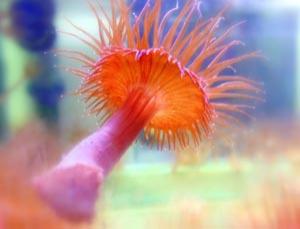
Aiptasia. The name alone brings shudders through many aquarists’ bodies but this prolific reef tank nuisance is being put to good use by the Israeli bio-medical firm NanoCyte. According to a recent article in New Scientist, the company has found a way to harvest the stinging cnidocysts of the Aiptasia diaphana as a way to deliver topical applications for cosmetic and medical use. The super-secret method the company described akin to milking a cow allows for the animal to regenerate these cells and be “milked†again down the road. Stripped of their toxic components, the cnidocysts or micro-needles are combined with a cream of the drug or cosmetic formula that is then delivered through the skin. When rubbed onto the skin, the micro-needles uncoil at a blazing acceleration rate of 40,000 g, picking up the active solution in the process and injecting it into the body (check out this video of the micro-needles in action). The micro-needles also provide an active channel for slower delivery for several hours. According to the article, a one square centimeter area of skin could contain as many as 1 million of these micro-needles with about one third firing in the right way to penetrate the skin painlessly. On the medical side, the company just completed an FDA-approved Phase II trial for a topical Lidocaine local anesthesia used in dentistry and is researching this method to deliver insulin for diabetics, glucosamine for knee and joint pain and non-steroidal anti-inflammatory drugs for arthritis and local pain. The company is also researching high-end cosmetic applications for anti-aging skin creams and dermatological applications to treat acne, psoriasis and skin cancer. Replicating nature as a way to make advances in medicine is an intriguing area and as the mysteries of the sea unfold, we hope to see other regenerative methods come out in the near future.



